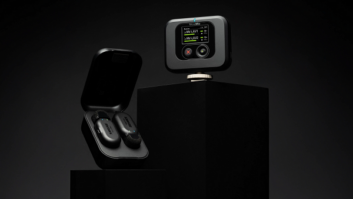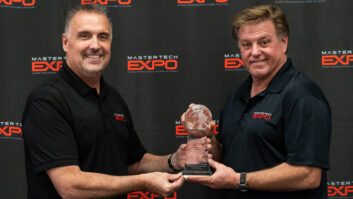Consumer acceptance of Ultra High-Definition TV depends on having 4K content to display.
Obviously, the best way to enjoy an Ultra HD picture is to have native 4K content piped directly to the set, but as with the start of any new format, it will take a little time for broad-based availability to catch up with the arrival of Ultra HD sets.
To address the chicken-and-egg conundrum, some Ultra HD equipment manufacturers have implemented advanced up-conversion systems using pixel line doubling, quadrupling and other processes to make standard-definition and high-definition source material look close to native 4K.
The best up-conversion systems produce movie and television images with easily discernable enhancement over regular HDTV sets.
The processing and expanded pixel count also improves the readability of onscreen text and graphics, which is especially important for today’s smart-TV systems that often include open web browsing.
A couple of testing services are available to ensure such systems measure up to acceptable standards.
Technicolor, for example, has launched a 4K Image Certification program, which has already certified a Marseille Networks 4K scaler chip available for peripheral components like Blu-ray Disc players and set-top boxes. Toshiba’s BDX6400 Symbio Media Box/Blu-ray Disc player uses the Marseille chip to up-convert SD and HD images to Ultra HD resolution.
Technicolor’s 4K Certification program is similar to a new THX 4K Certification program, where Ultra HD displays must pass 400 tests and measurements to ensure images are presented accurately. For example, THX said its certification evaluates color precision and lucidity, and analyzes image detail to make certain essential film elements such as grain and texture do not disappear.
THX put its first 4K stamp on Sharp’s new 70-inch Ultra HD model LC-70UD1U, which employs a two-step process to up-convert content to 4K resolution. The step uses a dual-core processor to fine-tune the original signal for optimal picture quality, followed by Sharp’s proprietary Revelation 4K Upscaler that analyzes and enhances the content to create a 3,840 by 2,160 image.
In addition to Sharp, companies including LG, Samsung, Sony and Toshiba have also invested heavily in sophisticated up-conversion systems to help early buyers get more bang for their 4K buck.
Toshiba handles up-conversion in its three currently available Ultra HD televisions differently than its Symbio Blu-ray Disc player. Instead of using the Technicolor 4K certified Marseille chip, Toshiba’s Ultra HD sets use the company’s own Cevo 4K quad-dual core processor to process both native and up-scaled 4K content sources. This includes a system delivering a 240Hz screen-refresh rate, built-in edge enhancement and UltraClear Dynamic Noise Reduction.
Scott Ramirez, Toshiba America Information Systems visual products marketing and development VP, pointed out that native 4K content viewing is “only one part” of the Ultra HD experience.
“When HD TVs were first available, very few people had HD content. However, they played DVDs on their HD TVs, and the picture looked better than anything they had before,” Ramirez reminded. “Playing 1080p FullHD content on a 4K Ultra HD TV provides the same immediate benefit, especially with Toshiba’s Cevo 4K processing.”
Sony is doing its part to drive availability of native 4K content by offering purchasers of its 4K Ultra HD TVs an optional 4K Media Player, but it has also taken upscaling seriously.
Sony’s proprietary 4K X-Reality Pro Picture engine found in its five current Ultra HD LCD sets analyzes and refines images from all sources to fill the screen with enhanced SD and HD images.
For 3D, Sony now makes both passive- and active-shutter variety Ultra HD sets. For passive 3D, the 4K X-Reality Pro engine up-scales FullHD resolution 3D images to 3,840 by 2,160 and displays them on the polarizing sheet on the screen in 3,840 by 1080 for the left and right eyes, respectively.
Samsung’s S9- and F9000-series Ultra HD TVs use proprietary Quadmatic Picture Engine, which uses a four-step process — signal analysis, noise minimization, Ultra HD up-scaling and detail enhancement — to up-convert SD, HD or FullHD content to Ultra HD picture quality.
Similarly, LG offers advanced up-conversion, called Tru-Ultra HD, in its 65- and 55-inch LA9700-series Ultra HD TVs. According to the company, picture quality is up-scaled through a four-step process that enhances picture detail.
The company’s 84-inch 84LM9600 model uses a Resolution Plus up-scaler in conjunction with a Triple XD Engine processor.
JVC’s 2013 pro and consumer groups each have D-ILA-based projector lines with models that don’t display native 4K signals, but instead use a unique upscaling system called “E-shift 2” to present 3,840 by 2,160 images by passing lower-resolution signal sources through two separate FullHD imaging devices, one set half a pixel up and to the side of the other.













